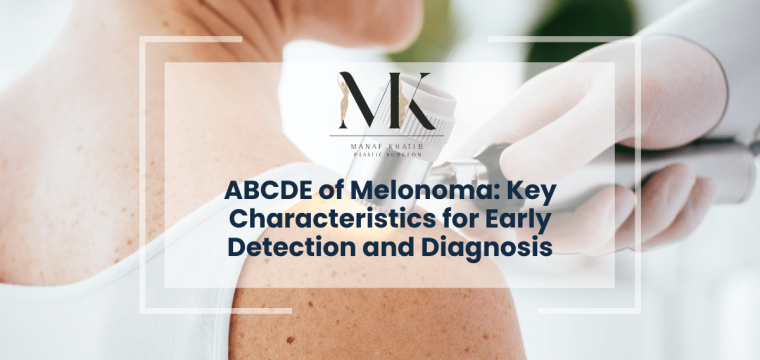Table of Contents
ToggleTable of Contents
Introduction to Skin Cancer Detection
Skin cancer is one of the most common forms of cancer, but it is also one of the most treatable when detected early. The ABCDE criteria are essential tools in identifying potential melanomas. By understanding these characteristics, individuals can conduct thorough self-examinations and recognize when to seek professional medical advice. Regular self-exams, combined with professional mole mapping, can significantly increase the chances of early detection and successful treatment.
Understanding Asymmetry
Asymmetry refers to a lack of uniformity in the shape of a mole. If you draw a line through the middle of a mole and the two halves do not match, it is considered asymmetrical. Melanomas are often asymmetrical, making this a critical feature to watch for during self-exams. If you notice any asymmetrical moles, it is advisable to consult with a dermatologist for further evaluation.
Management of post Moh’s basal cell carcinoma excision defects
Border Irregularities
Healthy moles generally have smooth, even borders. In contrast, melanomas may have irregular, notched, or blurred edges. These border irregularities can be a sign of skin cancer. During self-exams, pay attention to the edges of your moles and look for any changes in their borders over time.
Color Variations in Moles
While benign moles are typically a single shade of brown, melanomas can contain multiple colors, including shades of black, brown, tan, or even red or blue. Uneven coloration or the presence of multiple colors within a single mole can be a warning sign of melanoma. If you observe such color variations, it is important to seek a professional evaluation.
Diameter and Its Importance
The size of a mole is another important factor in detecting melanoma. Moles larger than 6 millimeters (about the size of a pencil eraser) are more likely to be melanomas, though they can be smaller. Monitoring the diameter of moles and noting any changes can help in early detection.
Evolving Moles and Skin Changes
Any change in a mole’s size, shape, color, or elevation, or any new symptom such as bleeding, itching, or crusting, points to the need for a medical evaluation. Evolving moles are a significant indicator of potential melanoma and should be monitored closely. Regular self-exams and photographic records can help track these changes over time.
The Importance of Professional Assessment
While self-exams are crucial, they should not replace professional evaluations. Dermatologists can provide a comprehensive assessment using mole mapping and dermoscopy to detect skin changes that may not be visible to the untrained eye. Regular check-ups, especially for those with a history of skin cancer or numerous moles, are essential for early detection and treatment.
FAQs
How often should I perform a self-exam?
It is recommended to perform a self-exam once a month to monitor any changes in your skin and moles.
What should I do if I notice a suspicious mole?
If you notice any moles that exhibit the ABCDE characteristics, schedule an appointment with a dermatologist for a professional evaluation.
Can skin cancer be prevented?
While not all skin cancers can be prevented, reducing sun exposure, using sunscreen, and wearing protective clothing can significantly lower your risk.
What is mole mapping?
Mole mapping is a procedure where dermatologists take detailed photographs of your skin to track moles and identify any changes over time.










